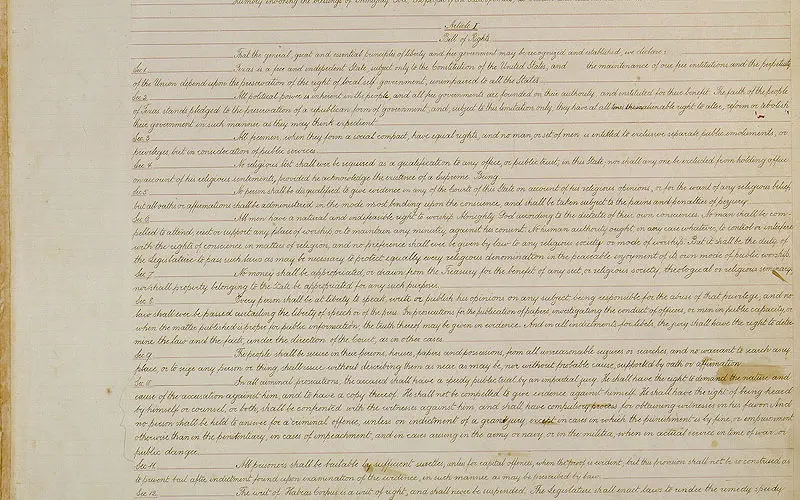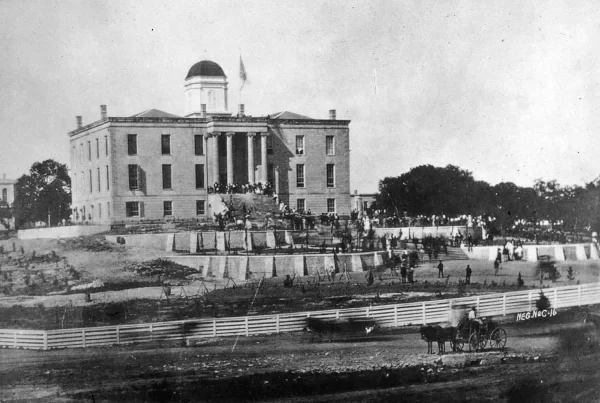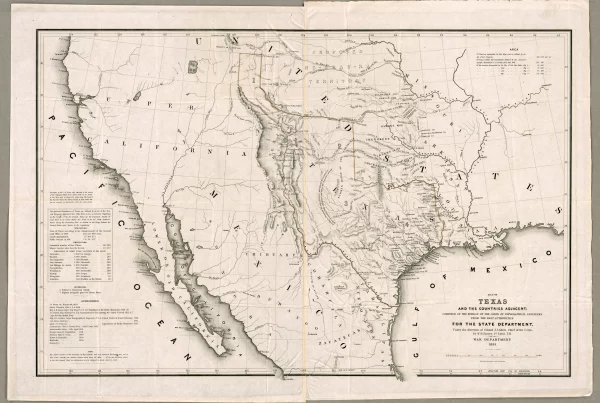The Texas Constitution can only be changed through a two-step process:
- The Texas Legislature first passes a joint resolution proposing the constitutional amendment.
- A majority of Texas voters then approve the amendment in a special election.
The Texas Constitution is the foundational legal document of the State of Texas, outlining the structure and functions of the state government, the rights of citizens, and the limits of state power. It is not meant to be changed without substantial political and public support.
Legislative Process for Amendments
Any member in either chamber of the Texas Legislature may introduce a joint resolution proposing a constitutional amendment. Two-thirds of the members must then approve the joint resolution in order for it to be placed on the ballot. That means a minimum of 100 members of the Texas House and 21 members of the Texas Senate.
The amendment may add to, remove from, or modify the text of the constitution.
Proposed amendments are styled SJR 1, HJR 1, and so forth, short for House Joint Resolution or Senate Joint Resolution. The joint resolution normally specifies ballot language that voters will see, which describes part but not all of the proposed amendment.
Unlike bills, which are presented to the governor for his approval or veto, joint resolutions adopted by the legislature are not submitted to the governor for signing. Instead, they are filed directly with the secretary of state.
If more than one constitutional amendment passes the legislature in a given year, the Texas secretary of state conducts a random drawing to determine the order in which the proposed amendments will appear on the ballot.
Constitutional Amendment Election
Constitutional amendment elections, also called ratification elections, normally take place in odd-numbered years after regular sessions of the legislature (e.g. 2021, 2023).
On the ballot, voters are presented with one or more “propositions” — the proposed amendments — and given the choice to vote for or against each one.
Ahead of the election, the secretary of state is required to widely publicize proposed amendments, including publication of “a brief explanatory statement of the nature of a proposed amendment, together with the date of the election and the wording of the proposition as it is to appear on the ballot,” according to the constitution.
The election is then held in accordance with procedures prescribed by the Legislature, in essentially the same manner as other kinds of election.
After the votes are cast, the returning officer in each county submits the returns to the Secretary of State. If a majority of the votes cast were cast in favor of an amendment, it shall become a part of this Constitution, and the governor must issue a proclamation to that effect.
Frequently Amended
The base text of the Texas Constitution was written 1875 at a constitutional convention, which was then adopted in 1876. The process for amending the constitution was established at that time. It is described in Article 17 of the constitution.
From 1876 through 2019, the Texas Constitution was amended 507 times, according to a report by the Texas Legislative Council. Of the 687 amendments approved by the legislature and placed on the ballot, voters have approved 507 and rejected 180, a ratification rate of 74%.
Sixty-six of the original sections of the constitution were removed between 1876 and 2019. Another 223 sections were added, though 52 of those were also later removed.
Comparison to the Federal System
The first step in the process of amending the Texas Constitution is similar to the process for amending the United States constitution, but the second step differs substantially.
The U.S. constitution provides that an amendment may be proposed by the Congress with a two-thirds majority vote in both the House of Representatives and the Senate. That’s the same as the Texas process, with the same requirement of a supermajority vote.
However, amendments to the U.S. constitution are not submitted directly to the voters for approval. Instead, they must be ratified by the legislatures of the states.
Moreover, the bar for ratification of a proposed U.S. constitutional amendment is significantly higher than the bar for ratification of a Texas amendment: three-fourths of the states, compared to a simple majority of Texas voters.
An alternative process also exists for amending the U.S. constitution: a “convention of states,” which would bypass the Congress. But this process has never been used.
Recent Constitutional Amendments
- HJR 132 (2023): Prohibited the imposition of an individual net worth or wealth tax.
- SJR 93 (2023): Provided for the creation of the Texas energy fund to support the construction, maintenance, and modernization of electric generating facilities.
- SJR 47 (2021): Changed the qualification requirements for certain judicial offices, requiring more experience and no serious disciplinary history.
- SJR 27 (2021): Prohibited the state or its political subdivisions from limiting or suspending religious services, even during a pandemic.
Recently Rejected Amendments
Texas voters in 2023 rejected a ballot propositions to increase the mandatory age of retirement for state judges and justices. This meant that the mandatory retirement age stayed at 75 rather than increasing to 79 as proposed.
List of All Constitutional Amendments
“Amendments to the Texas Constitution Since 1876,” report by the Texas Legislative Council [PDF – 150 pages].



